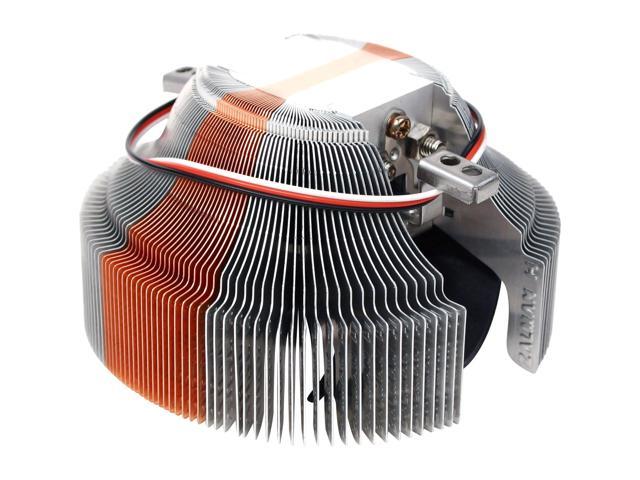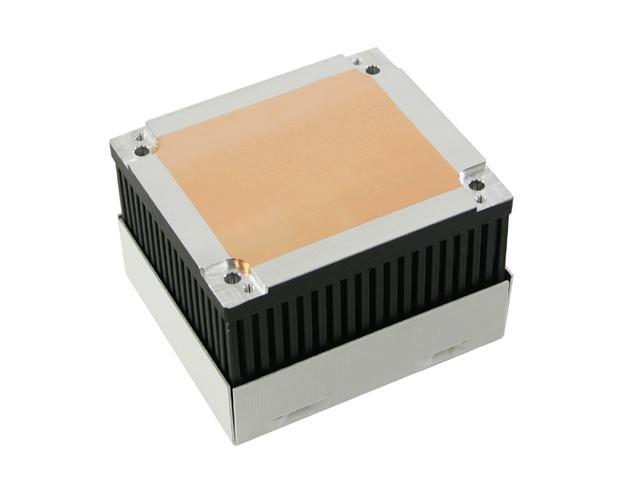Anon Lamer
Newcomer
Is it just me, or did anyone notice that the cooler fins are aluminium? And that those two tubes seem to be directly connected to each other? Aluminium < copper for heatsinks (but its lighter by far).
That not correct. A copper/aluminium is the best heatsinks. The copper will transfer heat to itself better then aluminium but aluminium releases heat faster to air then copper so a copper base with aluminium fins is better then a copper base and fins.Is it just me, or did anyone notice that the cooler fins are aluminium? And that those two tubes seem to be directly connected to each other? Aluminium < copper for heatsinks (but its lighter by far).
That not correct. A copper/aluminium is the best heatsinks. The copper will transfer heat to itself better then aluminium but aluminium releases heat faster to air then copper so a copper base with aluminium fins is better then a copper base and fins.
That not correct. A copper/aluminium is the best heatsinks. The copper will transfer heat to itself better then aluminium but aluminium releases heat faster to air then copper so a copper base with aluminium fins is better then a copper base and fins.
If your talking about this then this is not a copper base.No I think this heat-release-is-better is a myth. Empirical tests of CPU heatsinks shows that all copper heatsinks does better than mixed copper/aluminium heatsinks. See f.ex the Zalman 7K series which come in all-cu and mixed cu-al versions. All copper heatsinks are heavy which is why they have been slow to the marketplace, copper is also more expensive than aluminium.
200 W should be possible to do with air + heatpipes in a dual slot cooler. Remember that this inculdes memory + other non cpu electronics so the task is easier than cooling a 200 watt GPU/CPU. IMHO it may be that they used water cooling in samples as some sort of hack until an advanced aircooler was available. OTOH, this water cooling setup looks suspicious.

I might try that because I do have some thermocouples to play with. Thanks for the idea.If you're using two different metals, why not create a heatsink that is essentially a matrix of thermocouples and extract electricity while you're at it.
I have used and tested many different type of heatsinks, copper, aluminium, coper/aluminium and heat pipes and as of all copper, all aluminium, and aluminium fin with forged copper base the alumimuim fin with forged copper base did a bertter job and the thermal dynamics engineer I buy my heatsinks from will tell you the same thing.
Yes aluminum dissipates heat to air better thn copper. The tall heatsink your seeing out there are not doing a good job in design lately. Im see designs more for looks then profromans lately. The aluminum fins used are polished on both side and thats not good for dissipating heat to air at all. The fins need some texture to it to up the effecentcy of dissipating heat.Did he actually tell you that aluminum dissipates heat better than copper? I sure hope not.
Most of the tip-top performing heatsinks that are copper/aluminum mix are the ones that happen to be quite tall. Having a top-heavy heatsink made of all copper would cause a great deal more stress on the mobo/socket.
If your talking about this then this is not a copper base.

I have used and tested many different type of heatsinks, copper, aluminium, coper/aluminium and heat pipes and as of all copper, all aluminium, and aluminium fin with forged copper base the alumimuim fin with forged copper base did a bertter job and the thermal dynamics engineer I buy my heatsinks from will tell you the same thing.
I gave you a lot of links to look at. Also, remember that a lot of wiring is CU and no longer AL because it TRANSMITS ENERGY (this means heat too since heat is energy) better/more efficiently than AL does.
Did you read what I said about the AlCu Zalman? Its not a copper base but a Al base and will behave just the same if put aginst the same heatsink that was all Al. I have done test with the same heatsink that was made with all copper, all Al, and copper base Al fin and the Cu/Al was the best and that was on both system test ans test with a 89W TEC. The Cu/Al out did the Cu but 3C to 5C at removing heat for the heat sorce.Cu is shown superior to AlCu in Zalman HSFs here (note the spread as the fan voltage is lowered) and here.
I'd be surprised if AlCu outperformed Cu. It comes close, and obviously weighs much less and costs less, but in terms of transferring heat away from your CPU/GPU, pure Cu is the better choice, both theoretically and empirically.
What tests did you perform, {S}W, and was your only criteria core temperature?

Did you read what I said about the AlCu Zalman? Its not a copper base but a Al base and will behave just the same if put aginst the same heatsink that was all Al. I have done test with the same heatsink that was made with all copper, all Al, and copper base Al fin and the Cu/Al was the best and that was on both system test ans test with a 89W TEC. The Cu/Al out did the Cu but 3C to 5C at removing heat for the heat sorce.
This is what a Al fin with forged Cu base is and the same heatsink made of copper would proforem less then this Al/Cu.
Not quite. There is a linear relationship between electrical conductivity and thermal conductivity for metals only. See the Wiedemann-Franz law.That is complete bollocks.
